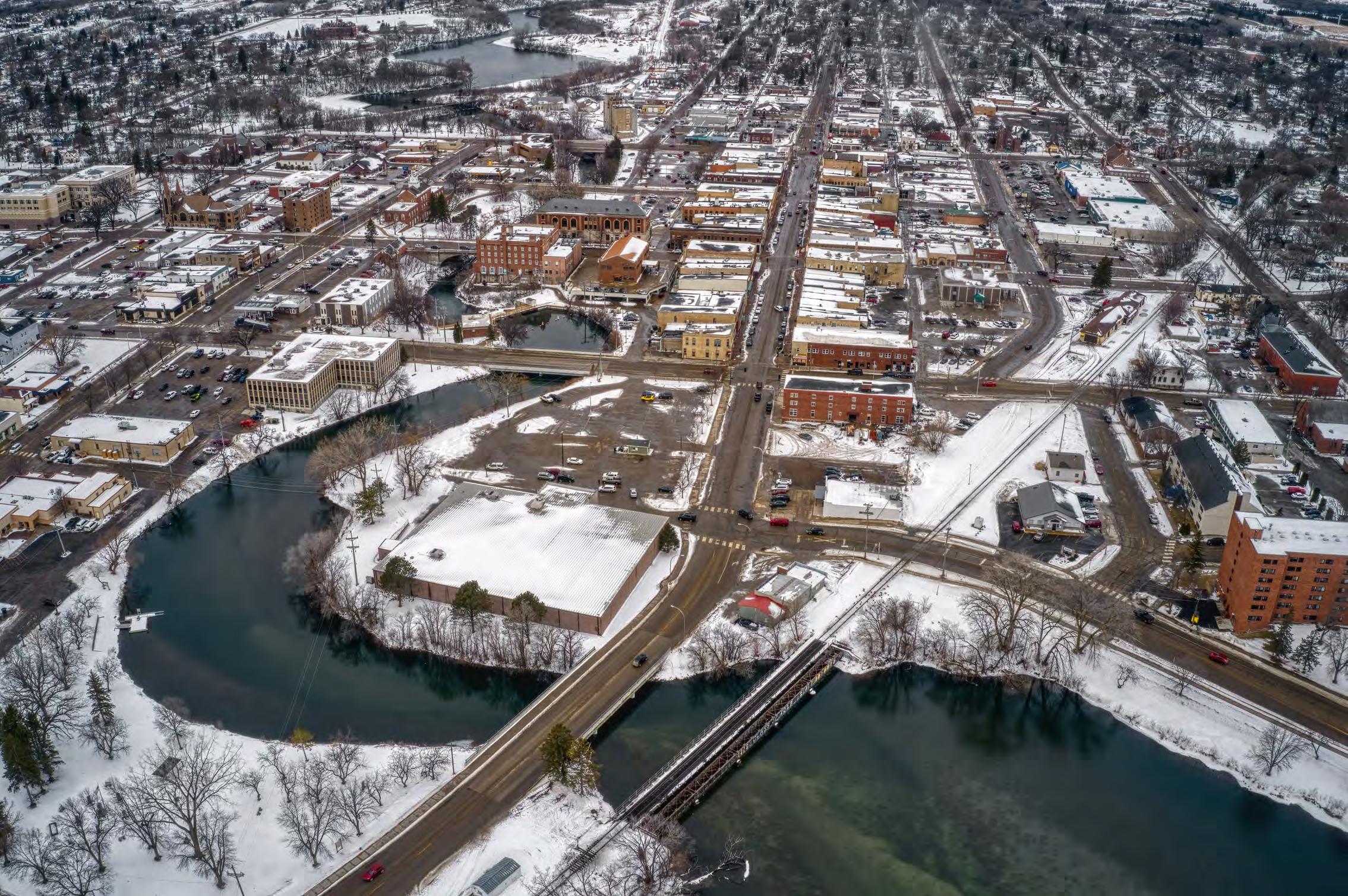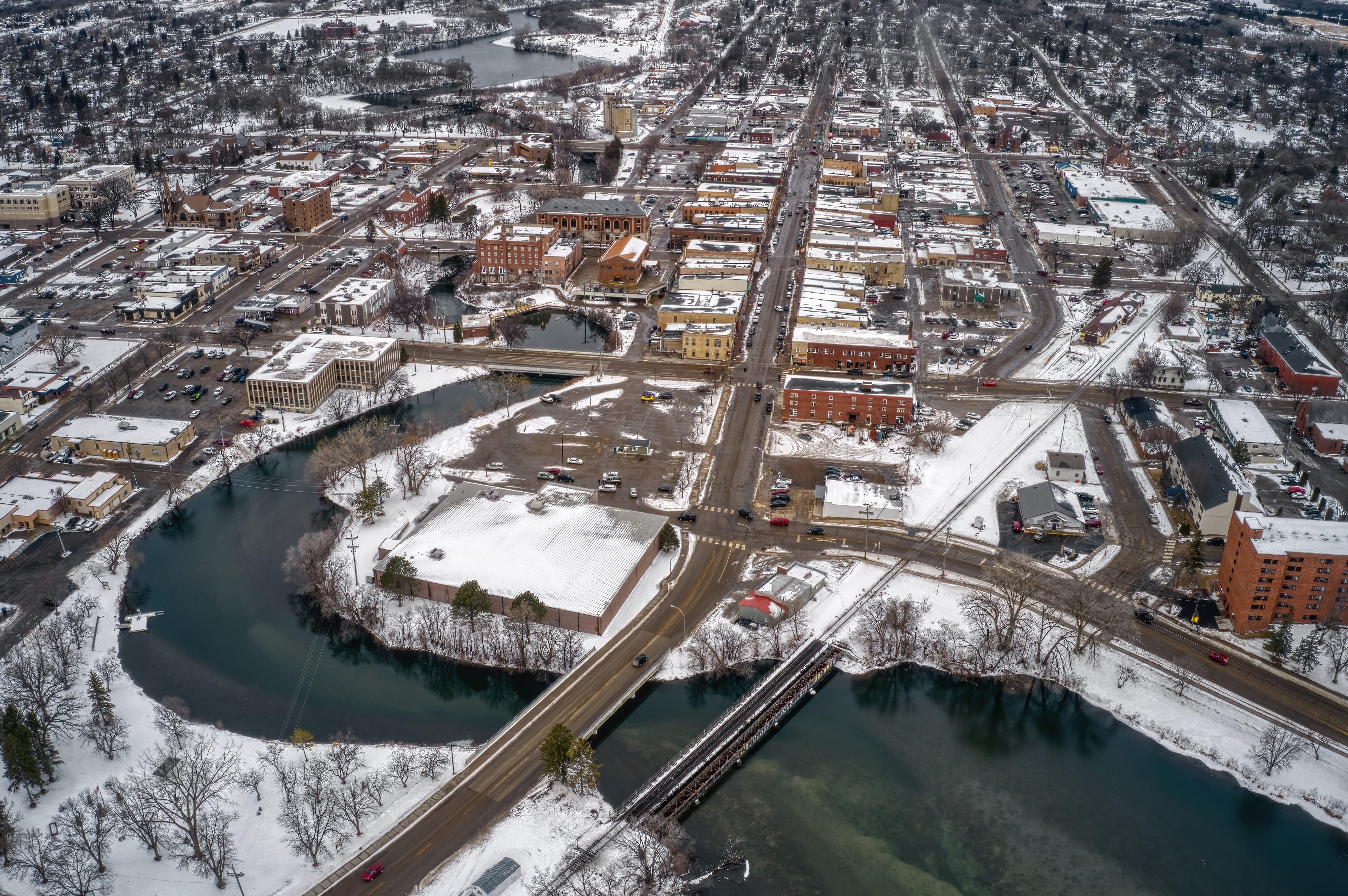
16 minute read
WHY TREES MATTER
The Benefits of Planting Trees
Community


Trees and green spaces enhance life quality and reduce stress levels.
Trees on your property can uplift the whole community
Environment



Trees reduce heat islands by cooling through evaporation and shading.
Trees enhance air quality by filtering dust and harmful pollutants like ozone.

Traffic moves more slowly and safely on treelined streets.
Trees provide habitat, food, shelter, and protection for various wildlife.

Economy






Trees can regulate home temperature, reducing cooling and buffering winter winds.
Welllandscaped homes with mature trees can increase property value by up to 10%.

Through reducing energy demand, trees lower utility infrastructure costs, benefiting consumers.

Strategy GT 1
Increase tree cover, particularly in areas of increased vulnerable population shares 5% by 2040. (an increase of 40,000 acres total)
Our tree canopy reduces storm water runoff, provides clean drinking water, reduces the effects of urban heat islands, decreases energy use in our buildings, sequesters atmospheric carbon dioxide while serving as a long-term carbon sink, and supports increasing economic growth. Increasing tree canopy coverage and health provides critical climate adaptation services. Increases should be prioritized to balance the potential for increased tree canopy with the opportunity to improve tree canopy benefit equity, potential to positively impact as many households as possible, and the need for mitigation of heat island impacts. The suggested tree canopy increases by county shown below prioritizes based on the following weighted criteria:
Potential for new trees: 20%
Population density: 20%
Low-income density (equity adjustment): 30%

Heat island reduction need: 30%
Go to Implementation for supporting actions.
Tree Canopy Increase Over Existing Tree Canopy Area
Strategy
GT 3
Increase pollinator supportiveness of lawns and grasslands in Region and achieve a 2.5% turf replacement with native grasses and wildflowers

Region-wide by 2030. (an decrease of 22,000 acres total)
Replacing lawns with native grasses and wildflowers creates a more authentic, natural American landscape that combats climate change and provides shelter and food for songbirds and other small mammals. Compared to the typical lawn, native grasses improve water quality, reduce air pollution, provide habitat restoration and protection, and increase carbon sequestration. Over 1,085,000 acres of land in the region (21% of all land) is covered in grasses. 82% of all grass land coverage is manicured, mowed lawns with the remaining 18% being native/prairie grasses.
Go to Implementation for supporting actions.
Reduce heat island effect through Region-wide
“dark” impervious surface coverage particularly in areas of increased vulnerable population shares, by 5% from 77,400 acres to 73,500 acres by 2030.
Increased heat island effects raise human discomfort and health risk levels in developed areas, especially during heat waves which are projected to become more severe and more common for the region. There is a direct relationship between impervious surface coverage of a community and the amount of heat island temperature increase, particularly dark impervious surfaces. Dark impervious surfaces are dark colored building and pavement surfaces made from materials that absorb more light than they reflect such as asphalt, black roof membranes. Decreasing the amount of dark impervious surfaces will help decrease heat island and extreme heat and weather impacts in the region.
Go to Implementation for supporting actions.

What You Can Do
You can support the goals of the Greenspace and Trees section of this climate action plan as an individual, household, or a business. Here are just a few things you can do:

1. Plant a rain garden with native plantings to absorb storm water and replenish our aquifers.
2. Plant trees in your yard to provide shade and cooling in summer heat. Select trees suited for the changing climate of Central Minnesota.
3. Replace your lawn and landscape with droughtresistant, native or well-adapted, non-invasive plants.
4. Make your backyard a Certified Wildlife Habitat with the National Wildlife Federation.
4. Remove pavement and increase permeable surfaces. De-pave areas wherever possible to encourage stormwater infiltration onsite.
5. Install bioswales/rain gardens or rainwater diversion systems to reduce impact on the stormwater system.
6. Install a Green Roof (living roof) to reduce your energy consumption. Decrease heat island impacts, and reduce stormwater runoff.
*According to First Street Foundation, these properties have a greater than a 26% chance of being severely affected by flooding over the next 30 years. This represents 14% of all properties in Region 4.

The correlation between human health and environmental health is undeniable and profound. In the Midwest, escalating environmental impacts brought about by climate change are expected to aggravate health problems. This is primarily attributable to increasing temperatures, changing rainfall patterns, and the broadening habitat of disease-carrying vectors.

Rising temperatures bring about more frequent heat waves, a phenomenon that escalates the occurrence of heat-related illnesses. Such health issues pose a particular risk to the more vulnerable groups, including the elderly, infants, and those with pre-existing health conditions.
Changes in precipitation patterns could result in more frequent and intense floods and droughts. Flooding often contaminates water supplies, thereby increasing the risk of waterborne diseases. On the other hand, drought conditions raise the likelihood of wildfires and dust storms, both of which significantly degrade air quality and exacerbate respiratory conditions such as asthma and allergies.
Increasing temperatures and general season shift will cause Minnesota’s growing season to expand. The habitat and season of disease-transmitting vectors, including mosquitoes and ticks will expand with it. This could lead to an increased prevalence of vector-borne diseases such as West Nile virus and Lyme disease.
Mental health impacts may see a rise due to the social and economic impacts of climate change. Increased anxiety and stress about the future, as well as trauma from climate-related disasters, could lead to an upsurge in mental health disorders.
The Role of Local Governments in Climate Health and Safety
The effects of climate change pose significant threats to public health and safety. They influence the air we inhale, our weather conditions, the reliability of our food and water sources, and our engagement with both man -made and natural environments. As the climate change impacts continue to grow, so do the health hazards they induce. Local governments and the healthcare industry have long promoted healthy habits like a balanced diet and regular exercise to improve public health. In the same way, it's imperative for local governments to recognize and act on the relationship between climate impacts, adaptation and resilience measures, and community health. After all, the state of our environment plays a crucial role in shaping our public health outcomes.
Equity Considerations
Climate change impacts the health of all community members, however, people within our communities are differently exposed to hazards and some are disproportionately affected by the risks of climate change. According to the National Climate Assessment, greater health risks related to climate impacts can be experienced by some populations in our communities including children, older adults, low-income communities, and some communities of color. Others, like children, older adults, low-income communities, some communities of color, and those experiencing discrimination are disproportionately affected by extreme heat and weather events, and many have increased health and social vulnerability which decreases their access to resources that can help them avoid the risks of climate change.
Equity Approach Examples:
Effectively managing climate impact and health inequities necessitates understanding climate change's varying effects and prioritizing vulnerable groups in adaptive policy implementation. The following are example approaches:
1. Subsidized solutions for home-cooling and accessible public cooling centers can protect vulnerable households during heatwaves.
2. Green infrastructure investments, like tree coverage and community gardens, boost public health by improving air quality and cooling neighborhoods.
3. Enhanced stormwater management and affordable insurance shield low-income communities from rising flood risk.

Strategies
The strategies on the following pages guide our path in meeting our climate goals for the Transportation and Land Use sector. Each strategy is supported by a series of detailed actions to be explored and undertaken in order to carry out the vision and goals. These supporting actions are outlined in the Implementation section of this plan.
Go to Implementation for supporting actions.
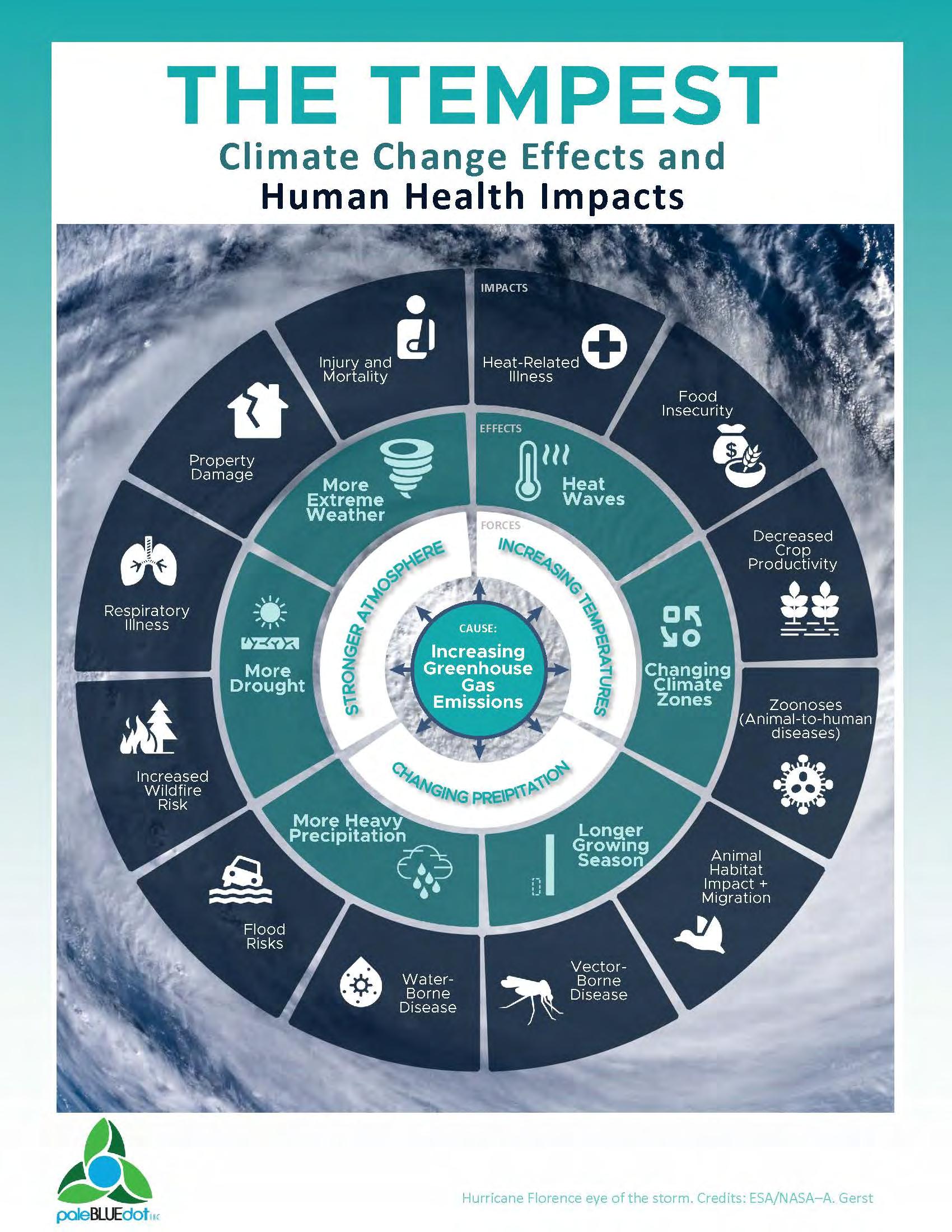
Strategy HS 1
Assist the Region’s climate vulnerable populations in preparing for and mitigating climate change impacts. (see the Minnesota Region 4 Climate Vulnerability Assessment for more information)
Local governments should support climate-vulnerable populations, who often bear an unequal share of climate change repercussions. These communities typically lack the necessary resources to adequately prepare for, and recover from, climatic incidents, putting their resilience under enormous stress. Government initiatives can enhance resilience through infrastructural improvements, emergency readiness plans, and climate literacy programs. Such endeavors safeguard not only the vulnerable individuals but also secure the economic and societal continuity of the community, endorsing enduring sustainability amid escalating climatic uncertainties.
Climate change impacts are universal and local government measures should accommodate the adaptive requirements of the entire community. The establishment of a prioritization structure is not an exclusionary practice but rather a crucial step in maximizing the impact and efficiency of finite governmental resources.

Drawing on the insights of the Minnesota Region 4 Climate Vulnerability Assessment, adaptive efforts in the region may be most effectively deployed by prioritizing strategies that mitigate climate risks of extreme heat, air quality deterioration, power/infrastructure failure, and food insecurity. Special emphasis should be placed on strategies that yield the most benefits for seniors over 65, economically stressed individuals, endangered workers, and people with disabilities.
Go to Implementation for supporting actions.
Strategy HS 2
Educate, engage, and empower the public on health and safety risks of climate change impacts.
Education is a pivotal tool in catalyzing climate action. By enhancing comprehension of the climate crisis and its implications, education equips individuals with the necessary knowledge, skills, values, and attitudes to serve as catalysts for change. Studies indicate that climate education contributes to emission reduction and decreases susceptibility to both acute and chronic environmental risks.
Effectively countering climate change as a public health menace necessitates preventive strategies such as education and outreach. These can shape individuals' behaviors, aiding in the prevention and reduction of the climate change impact across the community especially on the region's most vulnerable communities.
Go to Implementation for supporting actions.
Strategy HS 3
Ensure that the Region’s mission critical, emergency services, health care facilities, and infrastructure are prepared for impacts of climate change.
Mission-critical services, emergency facilities, health care systems, and infrastructure underpin community resilience. Their disruption during extreme weather can have severe consequences. Local governments, by preparing these infrastructures for climate change impacts, minimize risks, ensure service continuity, safeguard the vulnerable, and save lives. Climate-proofing these services reflects proactive governance, bolsters public trust, and spurs community engagement in climate change efforts. Amid escalating climate threats, such measures are key to sustainable development.
Go to Implementation for supporting actions.
Strategy HS 4
Strengthen community response capacity and social support networks.

Research highlights the significance of social networks during stressful periods, serving as catalysts for collective action and communication. Cohesive communities are more likely to implement climate risk management strategies, withstand severe weather events, and adapt to changing conditions. Some studies even suggest that mutual aid within communities can rival, or even exceed, the importance of emergency services. Therefore, Region 4's local governments can mitigate community vulnerabilities to climate impacts by fostering enhanced social connectivity.
Go to Implementation for supporting actions.
What You Can Do
You can support the goals of the Health and Safety section of this climate action plan as an individual, household, or a business. Here are just a few things you can do:

1. Put together an emergency preparedness kit for your household.
2. Get involved with your community’s Emergency Response Team (CERT) and join your neighbors and receive training to prepare for potential disasters.
3. Prepare your home for the extremes. Understand the risk of extreme weather, extreme temperatures, flooding or wildfire to your home, and take action to safeguard your home.
4. Keep yourself and your family current with physicals, vaccinations and prescribed medications and therapies.
5. Plan and rehearse a fire evacuation plan with everyone who lives in your home or apartment.
6. Have breathing-protection masks available for you and your family for when air quality alerts are declared.
7. Take first-aid and CPR certification training.
8. Notice a person who lives alone. Offer to check on them periodically, especially during extreme weather or a natural disaster.
9. Notice a person who sometimes lacks transportation to their doctor, shopping or other services. Offer to drive them.
10. Notice a person or family who lacks air conditioning in their home or apartment. Offer to have them visit or stay with you during extreme heat events.








Climate change and the economy are inexorably linked. Left unabated, the impacts of human-made climate change through the end of this century will cost the United States billions of dollars. According to a 2019 study by two EPA scientists, the difference in economic impact between the mid-range climate model (RPC6) and the high range climate model (RPC8.5) may account for as much as $224 billion in economic impact annually by 2090. According to a 2019 World Bank report on trends in carbon pricing, a carbon price range of $40-$80 per ton is necessary as of 2020 to reach the goals set by the 2015 Paris Agreement, while other studies have placed the full cost of carbon at $200-$400 per ton. Using the calculation outlined in Section 10 of the MN Region 4 Climate Vulnerability Assessment (Projected localized annual economic impacts of climate change as outlined in the Climate Vulnerability Assessment divided by annual community-wide GHG emissions as outlined in the Greenhouse Gas Inventory Report), an estimate minimum localized cost for carbon is $40 per metric ton.
The economy is also directly linked to climate action as well. One common concern is that climate action damages the economy. However, climate action today avoids the future costs associated with unmitigated climate change.
Seizing Opportunities of Global Action for The Region’s Economy
The climate crisis has garnered global attention, with over 400 major companies committing to achieve net zero emissions by 2050. Ambitious targets have also been set by nations, as demonstrated in the recent COP27 global climate meeting. China aims to achieve net zero emissions by 2060, while President Biden has pledged to reduce US emissions by 50-52% by 2030 and reach net zero by 2050, with support from the Infrastructure Investment and Jobs Act (IIJA) and the Inflation Reduction Act (IRA). Building local capacity for climate-forward businesses, jobs, and projects in Minnesota Region 4 is vital to capitalize on opportunities and actively participate in the transformative economic shift.

Contrary to concerns about detrimental effects on the economy, climate action can actually support economic development. Transitioning away from fossil fuels, improving public transit systems, and fostering local food industries involve a shift toward local energy and labor sources. This presents communities with opportunities to create wealth by reducing reliance on imported resources and creating local jobs.
This plan outlines essential strategies and actions to boost investments in the local climate action economy and unlock further growth in related sectors. By embracing these measures, Minnesota Region 4 can position itself as a leader in sustainable development and reap the economic benefits of proactive climate action.
Equity Considerations
Climate action presents considerable job development opportunities as well as pathways for equity and social justice. Historically disadvantaged and marginalized communities often bear the brunt of climate change effects yet reap the least from our economy. Hence, it's critical to intentionally structure these emerging green jobs to include these communities and provide fair access.
Investing in renewable energy, energy efficiency, and public transportation can create local jobs that offer livable wages and foster inclusivity. Cost savings from these climate actions can help reduce living costs, offering financial relief to those struggling. With careful implementation, climate action support equitable economic growth.
Equity Approach Examples:
The following are example approaches to equitable climate economy strategies:
1. Job Training and Education: Equity in climate economy actions can be promoted through targeted job training and education programs, enabling historically disadvantaged communities to gain skills necessary for green jobs.
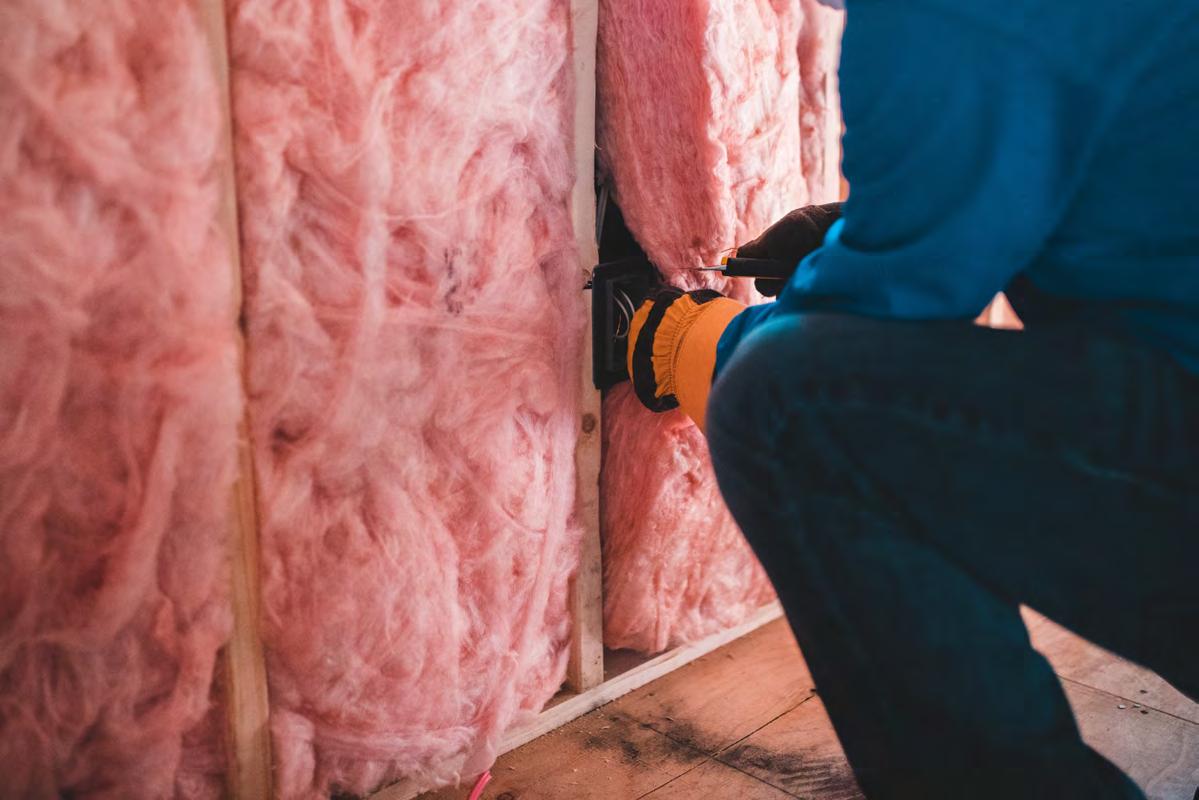
2. Community-led Renewable Energy Projects: Equity can also be achieved by engaging communities, especially disadvantaged ones, in planning and implementing renewable energy projects, providing local jobs and community-wide benefits.
3. Affordable Green Housing Initiatives: By improving energy efficiency and reducing emissions in housing affordably, these initiatives provide jobs, help residents save money, and promote access to all, regardless of income
Strategies
The strategies on the following pages guide our path in meeting our climate goals for the Transportation and Land Use sector. Each strategy is supported by a series of detailed actions to be explored and undertaken in order to carry out the vision and goals. These supporting actions are outlined in the Implementation section of this plan.
The Climate Economy: Impacts, Resilience, and Jobs
Physical Damage Crop Loss
Rising frequency of extreme weather events heightens the risk of property damage caused by flooding and storms.
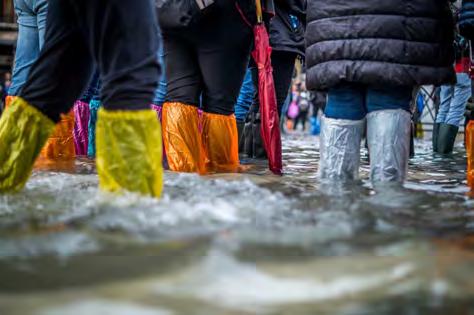
Increasing floods, droughts, and extreme cold/heat may reduce crop yields by 15% in Minnesota by 2050.

Supply Chain Community Loss
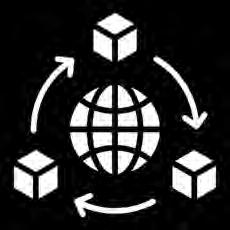

Extreme weather, floods, droughts, infrastructure damage, and blackouts can damage or halt supply chains.
Climate Change impacts are projected to cost local economies 1% to 4% of annual GDP by the end of the century
Learn Identify Include Partnership








Understand the physical risks to the region, industries, individual businesses and the workforce.

Identify the business and industry trends that will affect local employers, investment, and stability.
Incorporate climate risks and opportunities into economic development strategic plans.
Promote dialogue on climate change's economic impacts, foster partnerships, and inspire action.
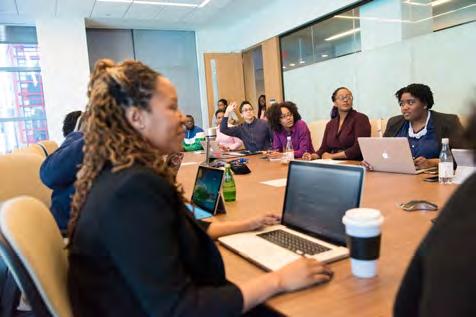
Efficiency Clean Energy Mobility Savings
Energy efficiency improvements in buildings stimulate job growth and enable new businesses.


Investing in renewable energy creates more jobs and bolsters local economies

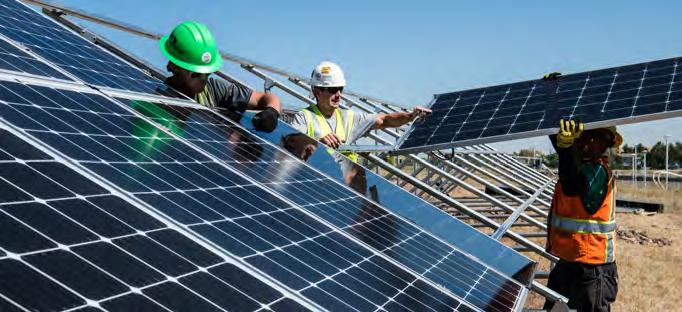
Every dollar spent on public transit generates four dollars and twice as many jobs as car investments.
Savings from energy efficiency, renewable energy, and climate actions are reinvested in the local economy.

Capture local economic potential of sustainability and climate action such as renewable energy, energy efficiency, and shared mobility businesses and jobs.
Addressing climate goals globally requires substantial investment over the next 15 years, essential to prevent lasting economic damage. But this expenditure can also stimulate growth.
Bold climate initiatives could result in a direct economic boost of $26 trillion in the U.S by 2030 compared to a "business-as-usual" scenario, as per the World Resources Institute. Simultaneously, the United Nations reports that for every dollar invested in climate action, communities reap an average of $4 in benefits. Post-COVID-19 research suggests that robust climate action and investments are effective strategies for communities to "build back better" from the pandemic while ensuring long-term economic prosperity. These dynamics offer economic development opportunities for communities, especially those planning strategically to leverage this potential.
Go to Implementation for supporting actions.
Increase equitable workforce and entrepreneur development for the Sustainable Economy.
Local climate actions like distributed solar energy and building weatherization create quality 'green' jobs, keeping investments within communities. The Brookings Institute reports that these jobs, crucial for transitioning to a carbon-free economy, provide higher, more equitable wages than the national average.

With lower formal education entry barriers, 'green' jobs pay higher wages to workers with no more than a high school diploma compared to other industries. Given the scientific knowledge and technical skills these jobs demand, they present opportunities for workers to acquire skills that benefit the local workforce in the long run. This means that tackling climate resilience offers an opportunity to bolster economic opportunities for disadvantaged individuals facing systemic barriers to progress.
Go to Implementation for supporting actions.
Example Jobs Needed in Support of the Sustainable Economy
Electricians
Renewable energy designers + installers
Energy analyst
Energy law
Grid integration engineering
Equipment manufacturers
Sales
Energy efficiency consultants
Energy auditors
Heating and air conditioning installers
Contractors (insulation, windows, roofing, etc)
Appliance and equipment manufacturers and installers
Sales
Infrastructure contractors
Transit drivers
Electric vehicle sales
Electric vehicle equipment installers
Electricians + engineers
Bike/scooter sales + repair
Transportation planners
Strategy
Support local agriculture and businesses operations in building marketplace climate resilience.
The COVID pandemic has vividly demonstrated how disruptions can trigger a domino effect on businesses, workers, and communities, with substantial economic impacts. In 2020, the global economy contracted by approximately 4.3%, or about $3.5 trillion, according to the World Bank.
The economic impact of climate change could dwarf what we've experienced with COVID, as a study by Swiss Re suggests. Even in the best-case scenario - meeting the Paris Agreement climate targets - the annual GDP impact by 2050 equals COVID's impact. In the worst case, with no significant emission reductions, the annual impact could quadruple that of the pandemic. Many of the world's biggest corporations, including Apple, Nestle, and 3M, have integrated climate risk and resilience into their business planning, with nearly half reporting climate-related financial risks nearing $1 trillion.
Small and local businesses, accounting for 44% of total economic activity and creating two-thirds of net new jobs, are similarly susceptible to economic disruption. Strengthening climate resilience within the business community benefits not just business owners but also employees, households, and the broader community.
Go to Implementation for supporting actions.
Establish sustainable financing for the Region’s Climate Action Plan implementation.
Current state and federal subsidies, along with local taxing powers, may not fully fund initial resilience and adaptation investments. This isn't due to a lack of investment value, but a mismatch with traditional financing models. Many resilience investments have short-term costs but long-term value, while others reduce future climate damage without immediate private capital returns.
Communities are exploring new financing tools like climate bonds and public-private partnerships. Some have also begun establishing Climate Funds and emissions trading programs to meet community climate resilience financing needs creatively.

Go to Implementation for supporting actions.
Potential Economic Impact of Climate Change
The expected impact to global GDP by 2050 under different climate change scenarios compared to a world without climate change:
No mitigating actions are taken (3.2°C increase):
Some mitigating actions are taken (2.6°C increase):
Moderate mitigating actions are taken (2°C increase):
Paris Agreement targets are met (below 2°C increase):
Estimated Global Economic Impact of COVID-19 Pandemic:
What You Can Do
You can support the goals of the Climate Economy section of this climate action plan as an individual, household, or a business. Here are just a few things you can do:
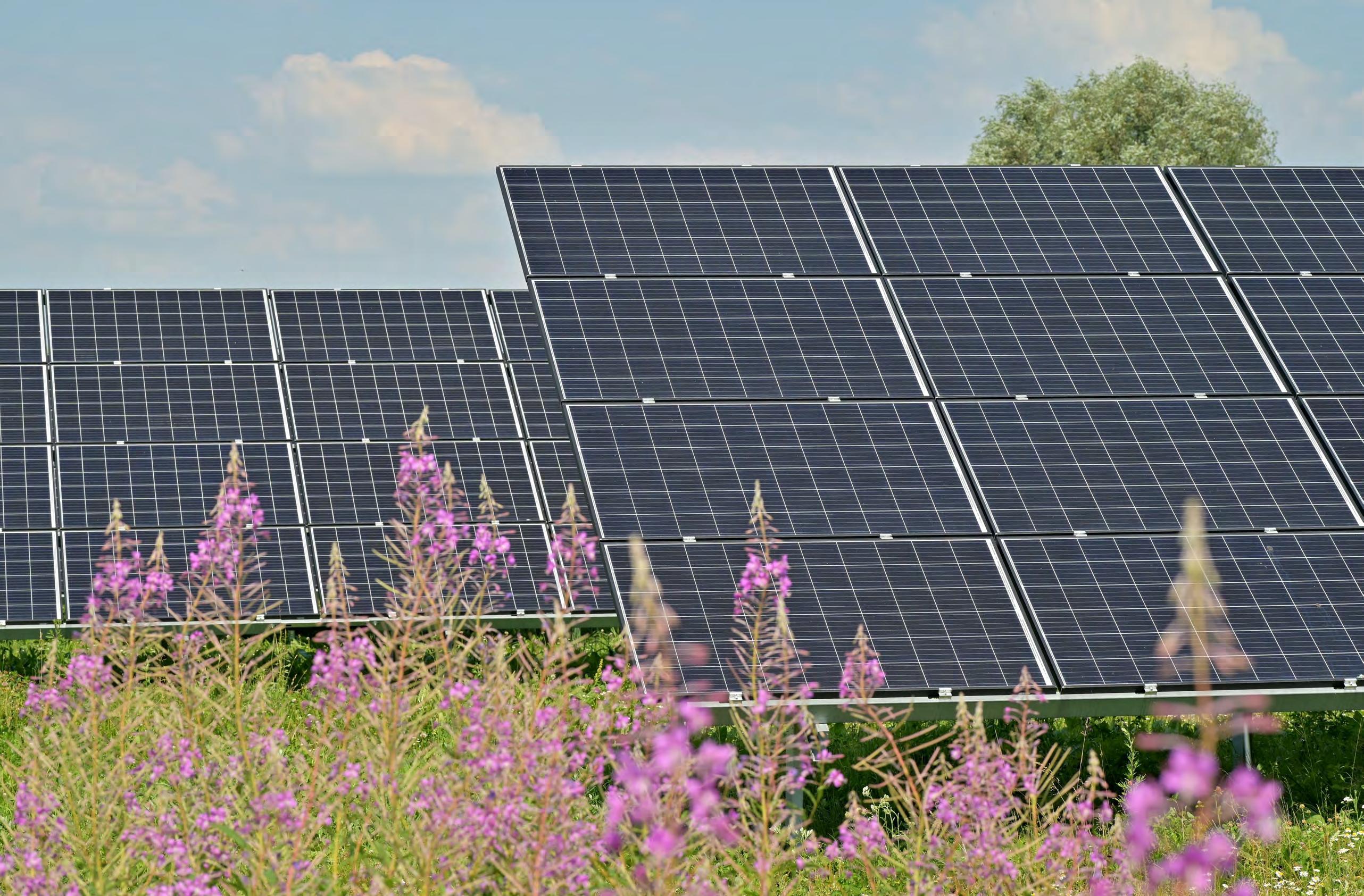
1. Shop at small, locally owned businesses.
2. Support businesses that have transparent and sustainable practices.
3. Mentor a young person to support them in their studies and careers.
4. Talk to your children about sustainability and how we can all be more sustainable in our daily lives – including our purchases and businesses we support.
5. Encourage the young people in your life to gain job experience and skills development in line with the climate economy such as in renewable energy.
6. Explore opportunities for a climate solutions career, a job in climate tech, sustainability, social impact, or learn more about sustainable career pathways.
7. Access entrepreneurship resources through the State of Minnesota’s Small Business Assistance Office to learn how to start a small business.
8. Explore opportunities for support through the State of Minnesota’s Small Business Environmental Technical Assistance Program.
9. Access information on sustainable business practices through the State of Minnesota’s Pollution Control Agency
10. Create a Disaster Preparedness Plan for your business.

